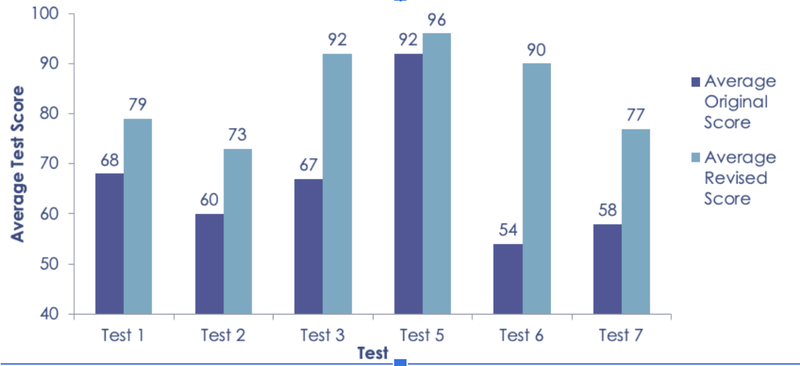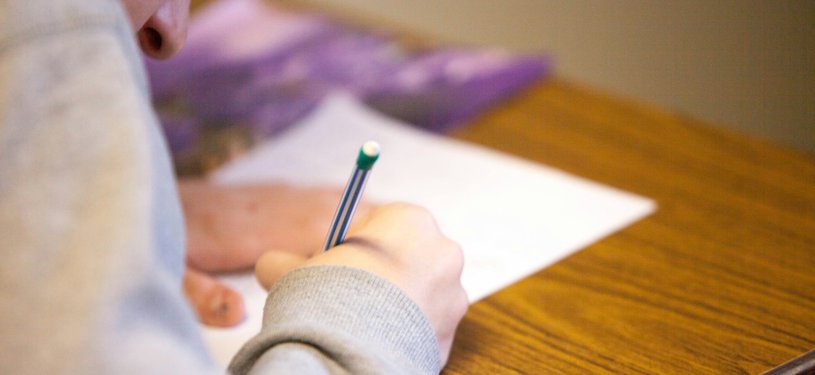
Using a Request to Test Form
Authors:The Idea: Addressing gaps in our understanding is an essential part of learning but students are not always given the opportunity to learn from their mistakes. Grading policies that do not allow second chances can send implicit messages to students that learning is not continuous. Instead, offering opportunities for students to revise their work can help students demonstrate their learning, growth, and mastery of concepts through continued practice and study.
The idea is that teachers provide regular opportunities for students to retake a test or revise work. Students who opt in will complete a revision form that helps to develop a personalized plan to address the gaps in their learning. Revisions from the student should be due in a timely manner.
This change idea should be a year-long option that gets introduced to students at the time of the first test and explained to parents. An expected outcome is that as the term progresses, fewer students will need to use the option to retest as they discover the learning strategies that work for them through the revision process.
Materials
Binder, space in classroom, trackers, etc
How to Test This Idea
Modify the Request to Retest form or make your own. Print the forms or make a digital copy available to students.
- Introduce the routine to students:
- Around the time of the first major test or assignment, introduce the request to retest and/or the request to revise forms to give students. Explain the details of the routine (e.g. when revisions are due, what constitutes “evidence of learning,” etc.)
- Be prepared to offer specific suggestions of what constitutes “evidence of learning”
- Introduce the routine to parents:
- Explain the routine to parents at a back to school night, open house, curriculum night, a letter home, or on your class website. Be sure to highlight how a student would obtain a request to retest form, when the retest or revision can happen, and when students can opt into this routine.
- Teach students how to use the form
- Prepare specific suggestions of what students can work on to relearn the material from class.
- Some students might need additional prompting to initiate this process. Consider having quick check-ins with students after the first major assignment to encourage each of them to try this process.
- Provide feedback to students about what constitutes evidence for learning how to improve.
- Collect Data and Maintain the Routine:
- Each time there is a major assignment or test, remind students (class wide or specific individuals) about the purpose of this policy and how to access it. Record student activity in the tracker throughout the year. If possible, hold onto student Request to Retest forms so that they can be analyzed for quality at a later time.
-
Research Base
When students are in a growth mindset, they show greater awareness of and attention to mistakes (Moser et al, 2011; Myers et al, 2016). To create a culture that supports students’ growth mindset, there needs to be frequent opportunities for students to learn from mistakes.
Carnegie Foundation for the Advancement of Teaching, Student Agency Improvement Community, 2018
-
Impact
6th Grade Math Class, Milford Central Academy, Milford Delaware
Milford Central Academy tested this idea in a sixth grade class. Students were given the opportunity to request to retest seven classroom tests. The graph below shows that the average score for seven out of seven tests improved after the students retested. The average improvement for tests where the average was between 60%-70% (Test 1-3) was 14%. The average improvement for tests where the average original score was failing (Test 6 and 7), was 28%.

-
Practical Keys to Success
- Consider where the form should be so that the most students can access it - this might be in a “view only” google doc, on the course website, in the front of the room, etc.
- Consider changing the language of the form - once students are familiar with the process, ask them what is working about the form and what is confusing, and consider altering the form to support students in being more authentic in their reflections
- Try adding a 1:1 conference as a pre or post step in the Request to Retest process. This might be a way to increase reflectiveness and synthesize learning from the process.
- Try adding time to reflect on how a test or assignment went into a lesson plan - this can be a place to normalize the process of revision for the whole class, as well as become a time for students to start to access the Request to Retest form in the safety of the classroom.
-
Measurement
Collect the original grade and the retest grade for each test.

Use the data collection tool for measurement Request to Test Data Collection








